By Pete Vack
Color photography by Tim Heit
Graham Gauld’s article on showcars several weeks ago brought a lot of responses and interest. When Graham sent me the photo of the Kelly Corvette, I vaguely recalled the car from the frontal view – which may be memorable, and a designer’s triumph – but ironically not its best angle. There was very little about the car on the Internet, just enough to tantalize further. It had appeared at Pebble Beach in 1994 (almost a generation ago) and at Amelia about a decade ago, but in general, few people know about this rare work of art. It turns out that the Kelly Vignale Corvette is an absolute knockout from almost any other angle, as can be seen above.
After Graham’s article was published, Larry Edsall sent us an email and told us he had just completed a book on the subject. Several days later it arrived here at our office and for the first time, we saw the car properly photographed from all angles. Edsall, the author of Legendary Cars and Master of Car Design, has put together the story of Gordon Kelly, (who passed away in 1995) using many of his letters and correspondence saved by the Kelly family. “I think it was around Thanksgiving 2011, that I was contacted by John Breslow and Chuck Rahn. They told me John had acquired a car and thought the story of that car and its designer should be recorded in book form and they thought I should do it”, said Edsall. Though in reality a long article rather than a book (8.5 x 11, 50 pages in a horizontal layout), it is particularly well done.
Edsall was skeptical at first, but he agreed to drive up to meet with John and Chuck, see the materials that had come with the car, and then see the car itself. “When I arrived, a wooden box about the size of a carry-on bag was sitting on a table. John and Chuck opened the box and inside was a scale model of the car. They opened the box, and I was hooked. This was a book I wanted to write.” Edsall would later find out that the model had also intrigued GM, enabled Kelly to obtain a Corvette chassis, and opened the doors for Kelly to Italy’s coachbuilders. Although Kelly didn’t know any Italian and usually arrived unannounced, as soon as he opened his carrying case and revealed the model, everyone knew he was serious.
It’s easy to fall right into this story. Admittedly, many Americans and Brits, even French, happily went off to Italy in search of a dream and a body, but Gordon Kelly’s story as related by Edsall’s guiding hand is more like a dream come true. Kelly wasn’t interested in building the Vette as a race car or a possible production car, nor was the car built as part of his employer’s (Brook Stevens) business. For years he had made sketches of his own particular dream machine, and eventually made a 1/8 scale model with a suitcase. But Kelly was no schoolboy sketcher. With his credentials, a promise from GM for a chassis and that fantastic model, Kelly went to Turin where he shopped about for a suitable coachbuilder. At Vignale, Kelly had his dream car created to his exact plans and the result was a mirror image of the model he had created. That, even Frank Costin could not do, having had a terrible time with the 1957 Maserati Zagato 4.5 coupe, and we recall Porsche’s difficulty with the Abarth Carrera. Having an Italian coachbuilder come through with a perfectly conceived product the first time was rarely easy, particularly for an outsider.
Perhaps one of the differences was that Gordon Kelly himself was not only a designer but an engineer. He was someone who could foresee problems and was good at detail work. Nothing escaped his attention, no item too small. He knew there would be problems with front windshields (taken from used Lincolns and recut to size, he knew they might crack and sent several), interior elements, even designing the stand and decorations for the 1962 Paris show where the car made its debut. He took a great interest in the special wheels designed specifically for the car by Kelsey-Hayes. He traveled to Turin several times during the project to see that everything was going as planned. The biggest problem came about when the new Corvette was delivered to Vignale. The workers removed the fiberglass body and chopped it up, figuring that fiberglass was not a suitable material for a car body anyway. Kelly had wanted to resell the body to help cover the costs of the project, which ultimately came to over 14,000 USD. In 1962, that was a LOT of money.
The letters to Vignale provide a revealing view of what it was like to actually see your own car being created by Italian coachbuilders. Aside from the lost Vette body, Kelly was very happy with the work performed by Vignale, even though much of it was done by Vignale’s nephew-in-law over at Sibona & Basano. Much to Kelly’s joy, the only coachbuilder willing to take on his one-off project was Vignale, and it was the short, tight Vignale Ferrari coupes of the early 1950s that had inspired Kelly’s own design.
The history of the car is also almost too good to be true. Despite serious efforts to sell the car over the years (once for only $8900), it remained in the hands of the Kelly family until sold to John Breslow.
The only error we noted concerned the confusion of Vignale’s coachbuilding rivals circa 1952-53. In the book, a brief history of Vignale had the firm facing competition for Ferrari’s favors from Touring rather than Pinin Farina. By 1953 Ferrari had made the decision to use Pinin Farina as his coachbuilder of choice; Touring was already out of the running and the cars referred to in the text as Tourings were actually Pinin Farina-bodied Ferraris.
A great story, well told, and Edsall’s book is just what the new owner wanted it to be… a fitting tribute to the car’s creator, Gordon Kelly.
But how does one publish a 50 page hardback full color book? “I contacted four traditional publishers,” said Edsall. “Two were quite interested, but I didn’t want to over-promise on what I could deliver. Recently, Barrett-Jackson asked me to do a 40th anniversary update to be published by EventBooks, the local company that does the catalogs for Barrett-Jackson. I wondered if EventBooks might consider doing this book as well.” Things snapped together after that and the book was ready in less than a year.
Marketing, of course, remains a problem. In the case of Driven by a Dream, Breslow has decided he does not want to sell copies of the book. “His initial thought was to print around 300 copies to give to his car-collecting friends and to others involved in automotive history to share and to preserve Gordon Kelly’s story,” said Edsall. “That number grew as the book came together. One thousand copies were printed, some in hardcover, some in soft.”
At this time, the only way to obtain a copy is to see the car itself. “As the car makes appearances at various classic car shows and tours, John plans to donate copies of the book to be sold on site with the money going to a local school or non-profit organization.”
And once you see the car, I guarantee that you will want a copy of the book.
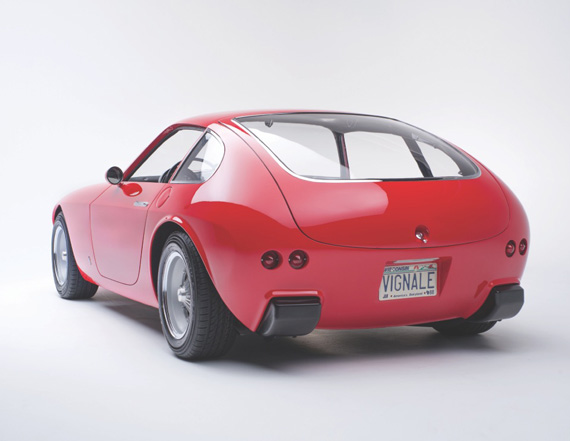
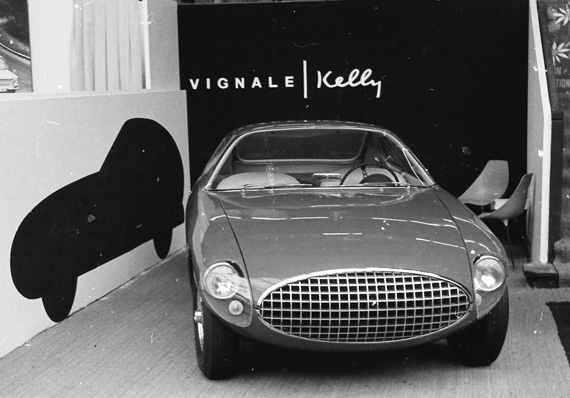
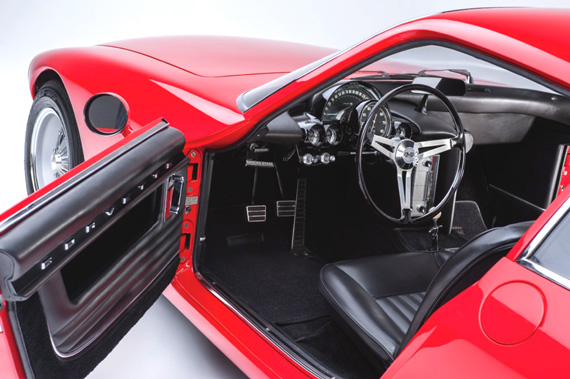
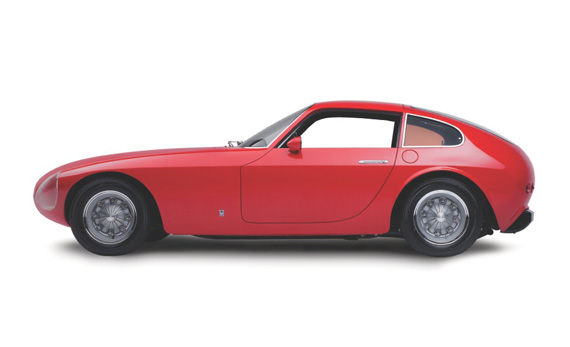
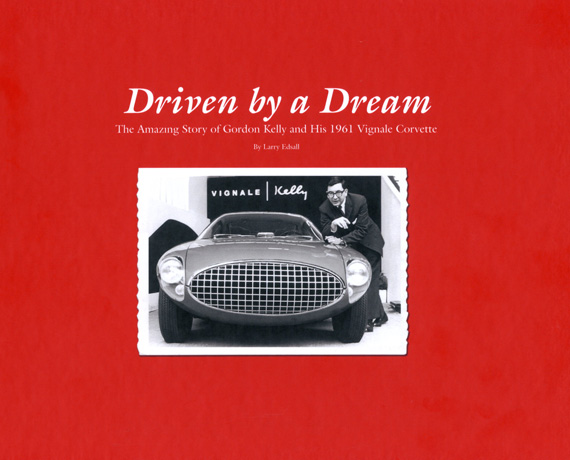
A fascinating story and lovely car! Pete, can you find out from Breslow and let us know where and when the book will be available to purchase this year? Grazi.
Why is there a Porsche 928 in Veloce?
What a stuning car. Will the car come to Europe? If not. It is not fair we can’t buy the book.
What a remarkable story! There are so very few in the world today that can pull off such a wonderful Dream- as to have their design executed by a coachbuilder. I would love to see more pictures of the vehicle – rolling sculpture as it is. What impresses me is how much it foreshadowed the Porsche 928. In a lot of pictures, it looks very similar to that shape and style, but with a distinct Italian nose.
Fascinating stuff, and a lovely car.
One slip of the pen. The unfortunate Costin of the botched Zagato Maserati, was Frank, not brother Mike. Make was an early cohort of Chapman´s at Lotus, introducing his aerodynamicist brother Frank to Chapman. The result was Lotus Mk VIII etc, most famously 11.
Frank became the Cos in Marcos (though he didn´t stay long) and Mike became the Cos in Cosworth, where I believe he is still a director.
I grew up about 3 blocks from the Kelly’s on Highland Drive on a hill just up from a set of railroad tracks. The most interesting view of the car was as it came towards you as we both were going down a fairly steep incline to meet at the tracks at the bottom. the large grill was eye-opening and it sounded great as it passed with the windows open. Great memories all around, thank you
In 1959 I was a young just ex soldier who met “Bunny” Phillips by chance and toured his shop in Rosemead, Ca. I stopped by every year or so and always was treated nice. In 1968 Bunny had a Bugatti Atlantic in his shop being roughly restored. Around 1972 he had it at the Monterey Classics, I believe he drove it up there to show. I though perhaps he owned it. Does anyone know where it is at now? The Mullin people say it is NOT the one they have on display.